Wander.alは、サービスの向上のためCookieを使用しております。当社のウェブサイトを利用することにより、Cookieの使用に同意するものとします。 Cookieポリシー.

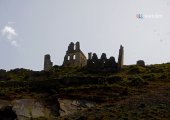


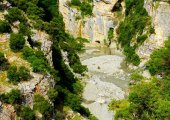
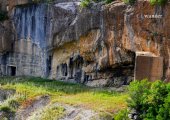
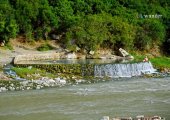
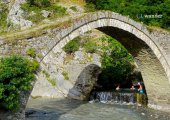
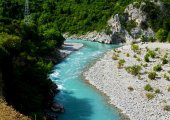


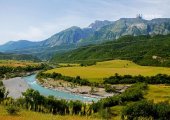
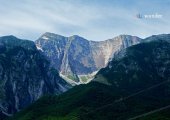
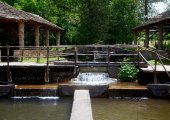
















The Vjosa River in Albania is one of Europe’s last living wild rivers. Along its entire course of over 270 kilometers it is untamed and free flowing and characterized by beautiful canyons, braided river sections, islands, oxbows and meandering stretches. In some areas the riverbed expands over more than 2 km in width. Together with its tributaries, the Vjosa provides a dynamic, near-natural ecosystem. It is without par on this continent - a true, though unknown European natural heritage. On its first 80 kilometres the river flows through Greece and is named Aoos. In Albania it turns into Vjosa. The meandering lower part opens up into a valley with extensive wetlands, providing habitats for spawning fish, migratory birds and others. Finally, it drains into the sea just north of the Narta lagoon – one of the biggest and ecologically richest lagoons of Albanian and as such designated as Managed Nature Reserve. The Vjosa is draining a total area of 6,700 km² in Albania and Greece and discharges an average of 204 m³/s into the Adriatic Sea.
Scientific knowledge about the Vjosa and its biodiversity is very limited. It is one of the least explored rivers in Europe: we might know more about the biodiversity of river systems in South America or Asia than we do about the Vjosa. Very few studies are at hand so far. But these few existing studies underscore the importance of the river valley as Albania’s biodiversity hotspot providing ideal aquatic habitats for numerous species.
It hosts a viable population of the near threatened Otter (Lutra lutra) and various migratory fish species, among them the critically endangered European eel (Anguilla Anguilla), as well as sub-endemic fish species like the Ohrid loach (Cobitis ohridana) and the Pindus stone loach (Oxynoemacheilus pindus). The flora of the Vjosa ecosystem is also impressive. The uppermost river section hosts a variety of endangered endemic plant species, such as the endangered Solenanthus albanicus. The lower valley is characterized by mixed Oak forests (Qurecus sp.) and Strawberry trees (Arbutus andrachne); for the latter the Vjosa valley represents the only habitat in the country.
The Vjosa River has a special and crucial place in the daily lives of the people that live along its banks. Its terraces provide the villages with fertile land for agricultural activities such as crop production and livestock farming. The abundance and diversity of fish is vital for the economy and the well-being of local fishermen. Recreational tourism on the Vjosa and its tributaries is ever-increasing, particularly in recent years in which enthusiasts have started to enjoy activities such as rafting, canoeing, kayaking, swimming, etc.
Many small-scale businesses and new emerging eco-tourism companies have based their existence on the free-flowing waters of the Vjosa. Moreover, the Vjosa and its crystal-clear water have had an impact on the hearts of Albanians and their cultural values. Naming newly-born girls after the Vjosa continues to be very popular among Albanian parents since the name stands for the beauty of the river and its untouched nature.
The biggest threat for rivers is hydropower. More than 400 new hydropower dams are to be built in all of Albania. Along the Albanian river section of the Vjosa, the Ministry of Energy intends to build eight dams. In the upper part, the Greek government is planning a dam project with the aim to divert about 70 million cubic meters per year through the River Kalamas for irrigation purposes.
The construction of these dams – or of just a single one of them - would destroy the incredible ecological value of the Vjosa River. It would alter its hydrological regime entirely and inhibit its natural sediment transport - the elementary force which shapes the highly dynamic morphological processes.
Vjosa‘s tributaries are not to be spared either. Along the Langarica, a tributary to Vjosa’s upper reach, two hydropower plants are already in operation and another one is under construction close to the confluence with the Vjosa. All three projects are located inside the Fir of Hotova National Park, clearly contradicting international guidelines for national parks. The projects are financially supported by the World Bank.
The Langarica is characterized by an impressive canyon 7 kilometer in length and 80 meter in depth, which was designated as natural monument in the 1970s. Due to its low water temperature and its river bed rich in gravel, the Langarica serves as spawning ground for many fish species. Furthermore, 8 thermal springs are located along the river, attracting hundreds of tourists each year. The construction of the third hydropower plant caused the springs to temporarily run dry in the beginning of October 2014. As a result, dozens of people took to the streets in Tirana demanding a stop to construction. Though the Minister of the Environment promised to appoint a working group as a reaction to the protest, constructions are in progress again.
The Vjosa is a European treasure. Its greatest value lies in its uncompromised intactness. The dams would destroy this unique ecosystem and its high potential for sustainable nature tourism in the future.
Source balkanrivers.net